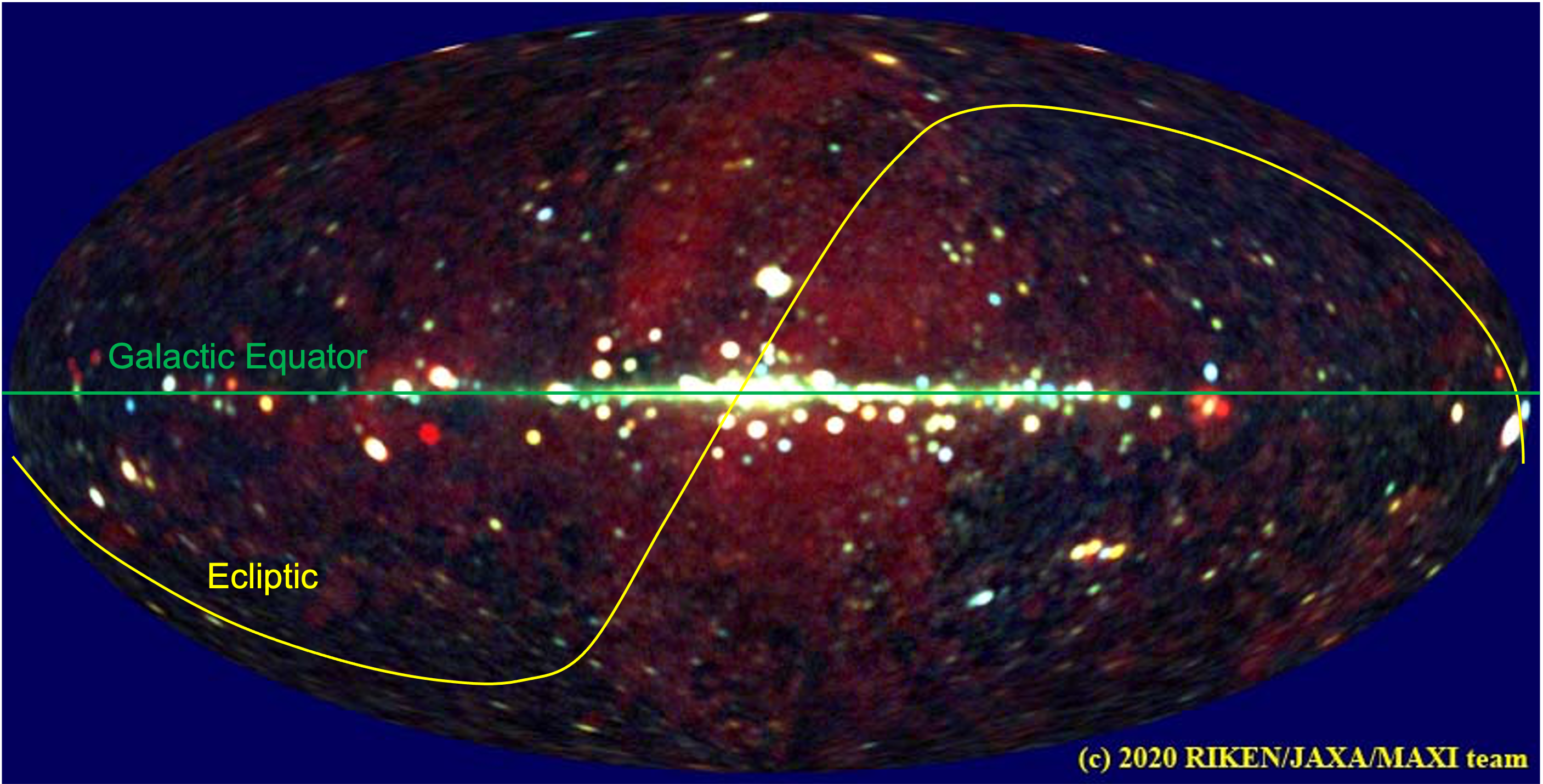NICER / ISS Science Nugget
for March 16, 2023
The return of the inner Galaxy
As the Earth makes its way around the Sun, our perspective on the backdrop of stars behind - and outshone by - the Sun changes slowly and predictably, but inexorably. The region of sky made inaccessible by the Sun's apparent march across the heavens is determined by the Earth's orbital plane (the "ecliptic") and by the calendar. Relative to the plane of our home Galaxy, the Milky Way, the ecliptic is tilted by approximately 60 degrees, and is oriented such that the Sun appears to cross the Galactic plane within 6 degrees of the Galactic Center every December 19th. NICER, like most telescopes, avoids staring directly at the Sun, and prefers to observe celestial targets outside of a 45-degree Sun avoidance cone. Thus, for approximately 3 months of every year, centered on mid-December, NICER cannot observe much of the inner sector of the Galaxy, where the highest density of stars, black holes, and other X-ray emitters are to be found (fortunately, there is plenty to be observed elsewhere!). Many of these inner-Galaxy objects are transient, typically dormant but occasionally flaring up in weeks-to-months-long episodes of increased brightness driven by accretion (the transfer of matter between stars) in binary systems. Because such systems can evolve quickly and are sometimes short-lived, there is intense interest in tracking their behavior with time, and discoveries requiring prompt follow-up are often reported to the community through Astronomer's Telegrams (ATels).
Beginning in late February, as the inner Galaxy again came into view this year for telescopes in space and on the ground, NICER users sprang into action: over the last two weeks, three ATel's have been posted describing preliminary NICER results from observations of three different inner-Galaxy transients. In ATel #15922, A. Sanna et al. report the detection of "Type I" X-ray bursts - flashes from thermonuclear explosions on the surface of a neutron star - from a binary system in the globular cluster known as Terzan 5, which lies at an angular separation of just 4.2 degrees from the Galactic Center and is so densely populated with such systems that it remains unclear whether this binary was previously known or is newly discovered. In ATel #15941, G. Mastroserio et al. report on NICER observations of the known black-hole candidate SLX 1746-331 during rapid brightening in the progression of its current outburst, the first since 2011. In ATel #15945, G. Mancuso et al. report that the neutron-star binary 4U 1730-22, which NICER observed intensively in the fall of 2022, before 4U 1730 entered Sun avoidance, surprisingly remains bright, suggesting either an unusually long outburst or a re-brightening that is sometimes seen in accreting systems as they return, apparently reluctantly, to quiescence. All three of these NICER studies were initiated by alerts received from JAXA's MAXI payload on ISS, which scans most of the X-ray sky on each orbit in a continuous search for transients. The NICER team looks forward to a productive season of inner-Galaxy astrophysics.

Figure:
The X-ray sky as seen by JAXA's MAXI payload in a 10-year accumulation of data, charted in Galactic coordinates, and showing a collection of point-like sources together with diffuse emission. The three-color representation includes images at low (0.7-4 keV; red), medium (4-8 keV; green), and high (8-16 keV, blue) photon energies. The yellow trace indicates the Earth's orbital plane in this projection, and thus the path of the Sun's apparent travel across the sky over the course of one year. Every December 19th, the Sun makes its closest approach to the Galactic Center, at the center of the image, and again crosses the Galactic Equator near the anti-Center (at far right) 6 months later.
<< Previous
Main Index
Next >>
NICER
Science Nuggets
Listed by year:
Listed by topic:
|